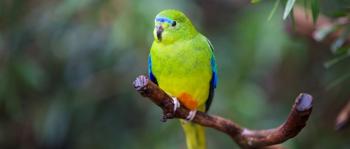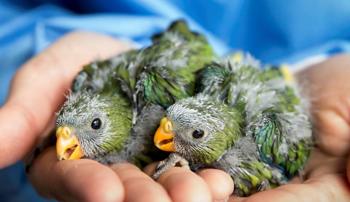Orange-bellied Parrot
The Orange-bellied Parrot is Critically Endangered. This very special bird is one of only two migratory parrot species in the world.
There are very few Orange-bellied Parrots left in the wild. Their last remaining breeding site is in Melaleuca, on the west coast of Tasmania. Every autumn the parrots fly to the south-east coast of mainland Australia and overwinter there, mainly in saltmarsh habitat, before making the journey back to Tasmania in spring.

The major threats
The main threats to Orange-bellied Parrots include habitat loss, disease, climate change, and the increase of predators and noxious weeds.

The plan for fighting extinction
Zoos Victoria is playing a key role in the recovery of this species. We maintain a viable captive population at our zoos to insure against the extinction of the Orange-bellied Parrot in the wild. We also conduct research investigating their migration, and provide support for the annual releases, and over-winter ranching of this beautiful species.
How you can help
- Raise community awareness and support for the Orange-bellied Parrot.
- Join the BirdLife Australia Mainland Winter Census and see if you can locate any Orange-bellied Parrots.
- Visiting our zoos supports our work to fight extinction.
- Donate if you can. We are a not-for-profit organisation, and all donations go towards our important conservation efforts.
- Discover more about local conservation events and join the growing number of wild activists taking action for local wildlife.
- Discover more about local conservation events and join the growing number of wild activists taking action for local wildlife.
Is your classroom learning about the Orange-bellied Parrot?
Browse through our collection of animal teaching and learning resources for students. These include animal toolkits, e-books, Ask a Zoo Expert resources, video showcases and real-world examples to support the VCE Study Design.
